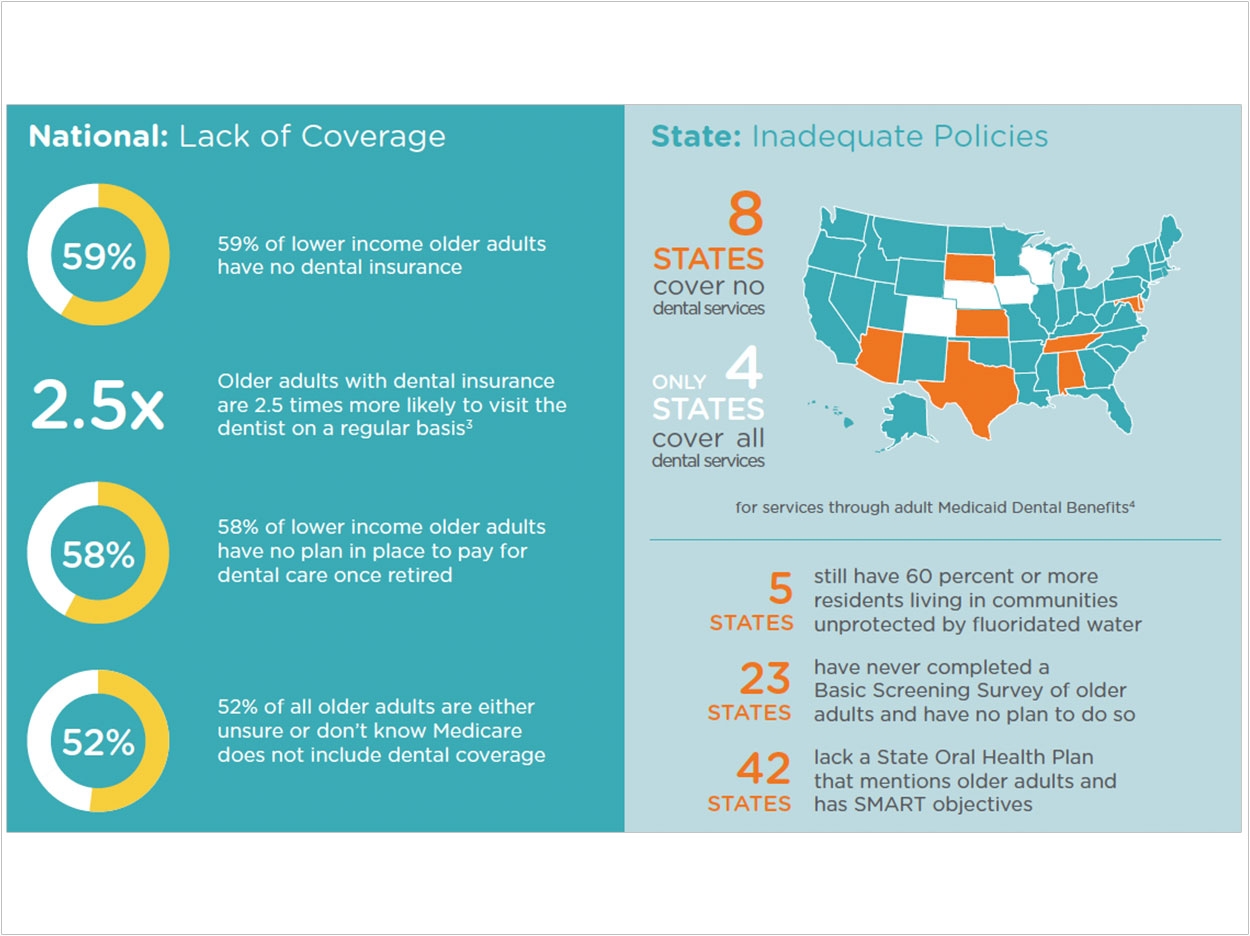
As baby boomers get older, the percentage of Americans older than age 65 is increasing. In 2010, about 13% of the population was age 65 or older. By 2030, more than 19% of Americans will be age 65 or older. Yet these people are facing significant challenges in oral care, which some states have been more successful in meeting than others.
Oral Health America (OHA) has released A State of Decay Volume III, which is a state-by-state report of the oral health of adults age 65 and older in the United States. Maintaining oral health is a daily challenge for many of these people due to limited access to dental insurance, availability of affordable dental services, a lack of fluoridated water, and a lack of prevention and education programs.
OHA ranked each state based on its edentulism rate, the extent of adult Medicaid dental benefits, its percentage of residents with a fluoridated water supply, its use of the Basic Screening Survey from the American Association of State and Territorial Dental Directors, and its use of a state oral health plan. The organization weighed these variables equally and combined them into a composite score.
Minnesota ranked the highest, followed by North Dakota. They were the only states to qualify as “Excellent,” according to OHA. Alabama ranked last, preceded by Tennessee, Hawaii, Wyoming, and Mississippi. OHA reports that 38 states were “Fair” (22%) or “Poor” (54%), with only 10 states meeting the criteria to be named “Good” (20%).
Minnesota did so well due to its 10.5% edentulism rate, 76.9% Medicaid coverage rate, 98.8% fluoridation rate, inclusion of older adults in its state oral health plan, and its efforts to conduct a basic screening survey for older adults in 2016. OHA also cited the state’s partnerships with dental organizations and training in elder care for dental hygienists.
At the other end of the scale, 8 states have edentulism rates of 20% or more, with West Virginia topping the list at 33.6%. Also, 60% or more of the populations of 5 different states live in communities that don’t have fluoridated water. Furthermore, 8 states don’t cover dental services through Medicaid, and only 4 cover the maximum possible services.
On the national level, OHA will support policies that allow older adults to live healthy and independently, such as the Older Americans Act. It also will support policies that recognize caregivers, such as the RAISE Family Caregivers Act. It will advocate for financially viable Medicare dental benefits as well.
On the state level, OHA will work to establish or reinstate Medicaid dental benefits for older adults. It also will support the addition or continuation of community water fluoridation. It will encourage states to include specific objectives for older adults in their oral health plans. And, it will help develop the surveillance or the oral health of older adults through use of the Basic Screening Surveys.
Related Articles
Older Americans Face Barriers in Oral Care Access
How Does Your State’s Oral Health Stack Up?
Minorities Face Disparities in Oral Care












